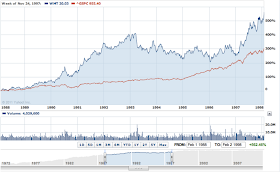I wanted to thank everyone who reads this blog for their interest. I love investing and it's fun to write these posts, but it means a lot to me that there are others out there who are enjoying the content that I've been putting together. The blog will be in hiatus until the New Year (that's the plan at least, but I'll be around next week so there is always the possibility of a post). I look forward to starting back in 2013 with more analysis that I hope you all will enjoy. In the meantime I put together a list of holiday stats to entertain. Happy holidays!
Scott Krisiloff
Holiday Statistics
Thanksgiving
· Americans eat 68 million Turkeys on Thanksgiving and Christmas (that’s 31% of the annual total)
· The average Turkey weighs 16 pounds, meaning that over 1 Billion pounds of Turkey are consumed on those days—roughly 3 pounds per capita.
Hanukkah
· A menorah burns 44 candles over the course of 8 nights of Hanukkah
· An average candle generates 250 BTUs (British Thermal Units) of energy, which means that a menorah generates 11,000 BTUs in 8 nights. That’s about equal to 0.18% of a barrel of oil.
· There are 2.9 million Jewish Households in the US. If each household lit a menorah every night of Hanukkah, the total energy content of the combined candles would represent about ~5,500 barrels of oil, enough to last a population of 10,000 Maccabees for 8 days (assuming that the Maccabees drive SUVs and otherwise consume oil at US per capita rates).
Christmas
· 95% of Americans say they celebrate Christmas. 93% exchange gifts and get together with family. 88% put up a Christmas tree.
· Only 76% of Americans describe themselves as Christian, which implies that ~80% of non-Christian Americans celebrate Christmas.
· There are roughly 50 million kids age 0-11 in the US. If Santa spends $75 per child he would spend $3.75B on presents per year. If Bill Gates decided he wanted to be Santa Claus, his fortune would last for ~16 years at that pace.
New Year’s
· ~30% of all champagne sales take place in the last 2 weeks of the year. That’s ~300 million glasses or 1.25 glasses per working age US population.
HAPPY HOLIDAYS!




















